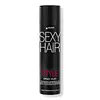What's inside
What's inside
 Key Ingredients
Key Ingredients

 Benefits
Benefits

 Concerns
Concerns

 Ingredients Side-by-side
Ingredients Side-by-side

Hydrofluorocarbon 152a
Alcohol Denat. Sd Alcohol 40
SolventDimethyl Ether
SolventTapioca Starch Polymethylsilsesquioxane
AbsorbentGlycerin
HumectantKaolin
AbrasivePEG-12 Dimethicone
Skin ConditioningCitrus Aurantium Amara Flower Extract
RefreshingBetula Alba Bud Extract
Skin ConditioningLavandula Angustifolia Flower/Leaf/Stem Extract
MaskingAdansonia Digitata Seed Extract
Skin ConditioningCitrus Grandis Peel Extract
AstringentPrunus Armeniaca Fruit Extract
Skin ConditioningTheobroma Cacao Extract
Skin ConditioningPropylene Glycol
HumectantSilica
AbrasiveWater
Skin ConditioningParfum
MaskingBenzyl Salicylate
PerfumingLimonene
PerfumingLinalool
PerfumingGeraniol
PerfumingCitral
PerfumingHydrofluorocarbon 152a, Alcohol Denat. Sd Alcohol 40, Dimethyl Ether, Tapioca Starch Polymethylsilsesquioxane, Glycerin, Kaolin, PEG-12 Dimethicone, Citrus Aurantium Amara Flower Extract, Betula Alba Bud Extract, Lavandula Angustifolia Flower/Leaf/Stem Extract, Adansonia Digitata Seed Extract, Citrus Grandis Peel Extract, Prunus Armeniaca Fruit Extract, Theobroma Cacao Extract, Propylene Glycol, Silica, Water, Parfum, Benzyl Salicylate, Limonene, Linalool, Geraniol, Citral
Ingredients Explained
These ingredients are found in both products.
Ingredients higher up in an ingredient list are typically present in a larger amount.
This ingredient is also known by its brand name, Dymel-A.
It is a colorless gas and often used in aerosols.
Glycerin is already naturally found in your skin. It helps moisturize and protect your skin.
A study from 2016 found glycerin to be more effective as a humectant than AHAs and hyaluronic acid.
As a humectant, it helps the skin stay hydrated by pulling moisture to your skin. The low molecular weight of glycerin allows it to pull moisture into the deeper layers of your skin.
Hydrated skin improves your skin barrier; Your skin barrier helps protect against irritants and bacteria.
Glycerin has also been found to have antimicrobial and antiviral properties. Due to these properties, glycerin is often used in wound and burn treatments.
In cosmetics, glycerin is usually derived from plants such as soybean or palm. However, it can also be sourced from animals, such as tallow or animal fat.
This ingredient is organic, colorless, odorless, and non-toxic.
Glycerin is the name for this ingredient in American English. British English uses Glycerol/Glycerine.
Learn more about GlycerinWe don't have a description for Hydrofluorocarbon 152a yet.
Parfum is a catch-all term for an ingredient or more that is used to give a scent to products.
Also called "fragrance", this ingredient can be a blend of hundreds of chemicals or plant oils. This means every product with "fragrance" or "parfum" in the ingredients list is a different mixture.
For instance, Habanolide is a proprietary trade name for a specific aroma chemical. When used as a fragrance ingredient in cosmetics, most aroma chemicals fall under the broad labeling category of “FRAGRANCE” or “PARFUM” according to EU and US regulations.
The term 'parfum' or 'fragrance' is not regulated in many countries. In many cases, it is up to the brand to define this term.
For instance, many brands choose to label themselves as "fragrance-free" because they are not using synthetic fragrances. However, their products may still contain ingredients such as essential oils that are considered a fragrance by INCI standards.
One example is Calendula flower extract. Calendula is an essential oil that still imparts a scent or 'fragrance'.
Depending on the blend, the ingredients in the mixture can cause allergies and sensitivities on the skin. Some ingredients that are known EU allergens include linalool and citronellol.
Parfum can also be used to mask or cover an unpleasant scent.
The bottom line is: not all fragrances/parfum/ingredients are created equally. If you are worried about fragrances, we recommend taking a closer look at an ingredient. And of course, we always recommend speaking with a professional.
Learn more about ParfumSilica, also known as silicon dioxide, is a naturally occurring mineral. It is used as a fine, spherical, and porous powder in cosmetics.
Though it has exfoliant properties, the function of silica varies depending on the product.
The unique structure of silica enhances the spreadability and adds smoothness, making it a great texture enhancer.
It is also used as an active carrier, emulsifier, and mattifier due to its ability to absorb excess oil.
In some products, tiny microneedles called spicules are made from silica or hydrolyzed sponge. When you rub them in, they lightly polish away dead skin layers and enhance the penetration of active ingredients.
Learn more about SilicaWater. It's the most common cosmetic ingredient of all. You'll usually see it at the top of ingredient lists, meaning that it makes up the largest part of the product.
So why is it so popular? Water most often acts as a solvent - this means that it helps dissolve other ingredients into the formulation.
You'll also recognize water as that liquid we all need to stay alive. If you see this, drink a glass of water. Stay hydrated!
Learn more about Water